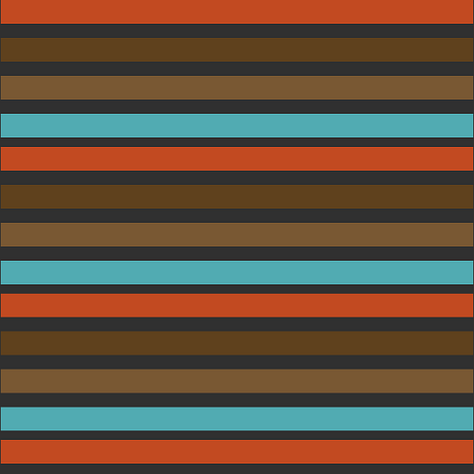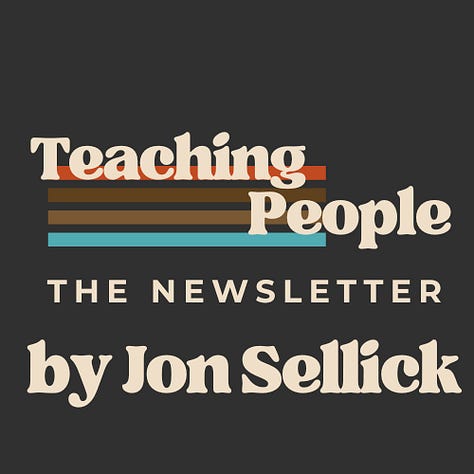Because Routine is Your Rhythm...
In this week's Teaching People, among other things, we're taking a look at a couple of examples of signature activities that can help bring structure and routine to your lessons.
In today’s newsletter, I’ve parcelled together three things:
The Feature Article: Because Routine is Your Rhythm - Signature activities that can help bring structure and routine to your lessons.
The Little Book List: Three books that aren’t about teaching that will definitely help your teaching.
Any Other Business: Some bits and bobs
Thanks for your interest. Please hit the subscribe button - this is a totally free newsletter, and your subscription to Teaching People will help keep this dream alive! Also, I think you’ll find it’s worth it. Oh - and another 'also’… tell your teacher friends!
Many thanks,
Jon
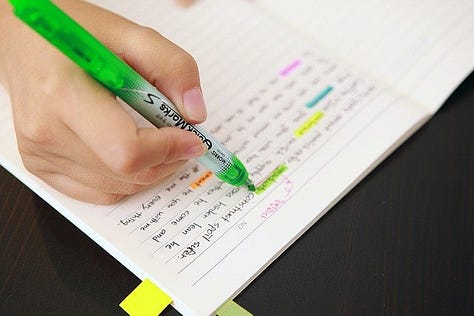

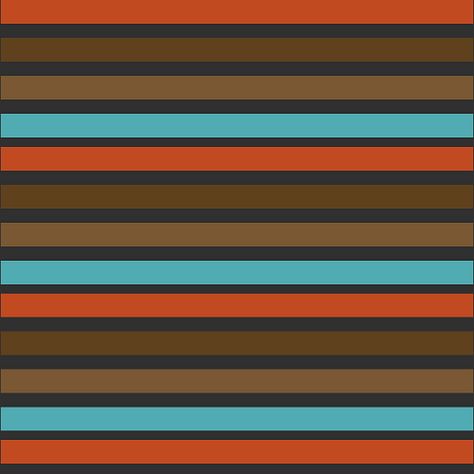
1. The Feature Article:
Because Routine is Your Rhythm
Variety is the spice of life and all that. But trust is vital when building impactful teacher-student dynamics in your classroom. And you gain trust from regularity and routine. Developing your own ‘house style’ is an important part of ensuring students have confidence in your teaching.
There are so many variations of starters and plenaries out there. If you can’t find one that suits your specific purpose, you’ll likely add to the catalogue by inventing your own! That’s fine, of course, but do consider that starters and plenaries are usually diagnostic in purpose; they all share the same aim of assessing pupils’ progress. So, the number of variations that exist is perhaps a little unnecessary. A quick three-question quiz is often all that is required, but there’s no harm in signature tasks - the key being that you use them regularly.
Establishing a house style by settling on two or three ‘go to’ starter/plenary activities that work for you and your pupils is a far better plan than constantly striving to add to your repertoire. This helps you because it takes away what could quickly become a debilitating decision-making process, and it helps your pupils because they enjoy the familiarity and routine you are embedding.
Aside from quick quizzes, here’s a couple of activities I use on a regular basis:
321:
Firstly, pupils write a summary of their learning in 3 sentences.
Next, they write a summary of their learning in just 2 words. (Forcing them to think of two words that would best trigger their recall of the topic)
Finally, they write a summary in just 1 sentence. (A nice cognitive trick, this: allowing them to flesh out their two words; with a constrict of succinctness still in place).
Run this activity a couple of times and before you know it, you’ll only need to shout out “321” and your pupils will be away. A Ted Rogers 321 finger gesture is optional (apologies for the dated cultural reference here - for the record, I only just remember Dusty Bin myself).
A nice companion starter is achieved by beginning the next lesson by shouting out a number from 1 to 3 and asking pupils to remember their corresponding words or sentence from the end of the previous lesson.
Acrostic Name Challenge:
Another consolidating exercise - useful at either end of a lesson - is to ask pupils to write their name vertically down their margin. Pupils then use the letters to structure a piece of summative text about their previous learning.
So, if Jon had just been taught about paragraphs, he might write:
Join sentences
On similar topics in to
Nice, readable chunks.
Or, if Mary had been taught about volcanoes in her geography lesson, she might write:
Margins in the earth’s surface cause volcanoes.
A volcano is formed when two crustal plates move together or apart.
Rising magma fills the gap between them.
You could say a volcano is basically an exploding mountain.
Whereas Mary’s classmate Ellie could write:
Earth’s crust is
Living.
Live volcanoes occur when crustal plates move towards each other.
In doing so they force magma to rise.
Exploding molten rock bursts out of the gap.
The process of deconstructing knowledge and then reassembling to fit the arbitrary parameters of their name encourages active retrieval, in addition to providing a sometimes-tricky literacy challenge to pupils. It is worth remembering that the partaking in the cognitive challenge of this exercise is more important than whether they complete a satisfying acrostic.
If they spend three minutes trying to think of one to fit the thing and they can’t it doesn’t matter - the point is that they have spent three minutes thinking really hard about whatever the thing is.
Undeniably, it takes a couple of try-outs to embed. But that’s the beauty of committing to a routine - and sticking with it pays off. This one is particularly rewarding because, if nothing else, you can usually rely on students to remember their own name. Which is always a good start.
2. The Little Book List:
Three books that aren’t about teaching that will definitely help your teaching.

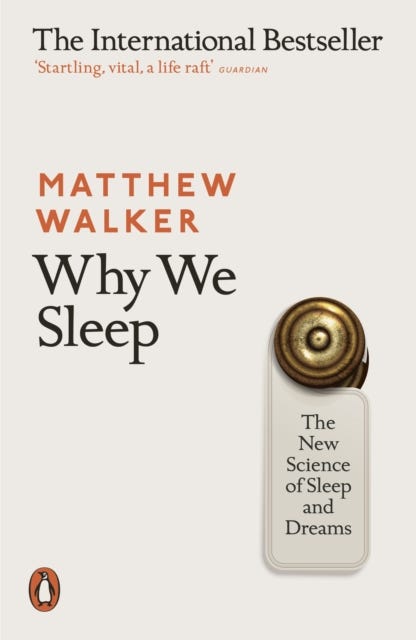

Talk Like Ted by Carmine Gallo
Why We Sleep by Matthew Walker
The Power of Habit by Charles Duhigg
3. AOB:
Some Bits and Bobs
Actually, just two. So more like, A Bit and A Bob…
Firstly, here’s the press release for Teaching People - thought it would be useful to put it on here. And if anyone fancies sharing this newsletter on socials (as they say), please feel free to copy and paste it:
Ideas for Teaching People From the People Who Teach
Newly established by Jon Sellick, this newsletter aims to bring new perspectives to your teaching.
Cross-pollination is the ultimate aim of this enterprise. With a Teaching People podcast launching in early 2025 and a newsletter out now, I am excited to be speaking to professionals within education, teachers and alike at primary and secondary level. But also, to be expanding my horizons - and, in turn, yours - to chat with lecturers, writers, presenters, actors, and leaders from across a variety of sectors to find out their backgrounds, perspectives, insights, routines and top tips. My view is that they are all, essentially, teachers. And I believe that by dropping into their worlds and mining their minds, I’ll find nuggets of wisdom aplenty that will help my teaching, and - I sincerely hope - yours too.
And, finally…
Be a Podcast Guest!
If you’ve just read what this is all about, and you like the sound of it, why don’t you go a step further and become one of Teaching People’s first guests? The Teaching People podcast will launch in early 2025, and I am currently in the process of getting those first episodes ready. If you’re a teacher (for any phase or subject), or the act of teaching is part of what you do, I’d love to chat with you, gain your perspective, share some ideas and then share them some more with listeners and subscribers. Get in touch (just reply to this email) and we’ll get something sorted!
